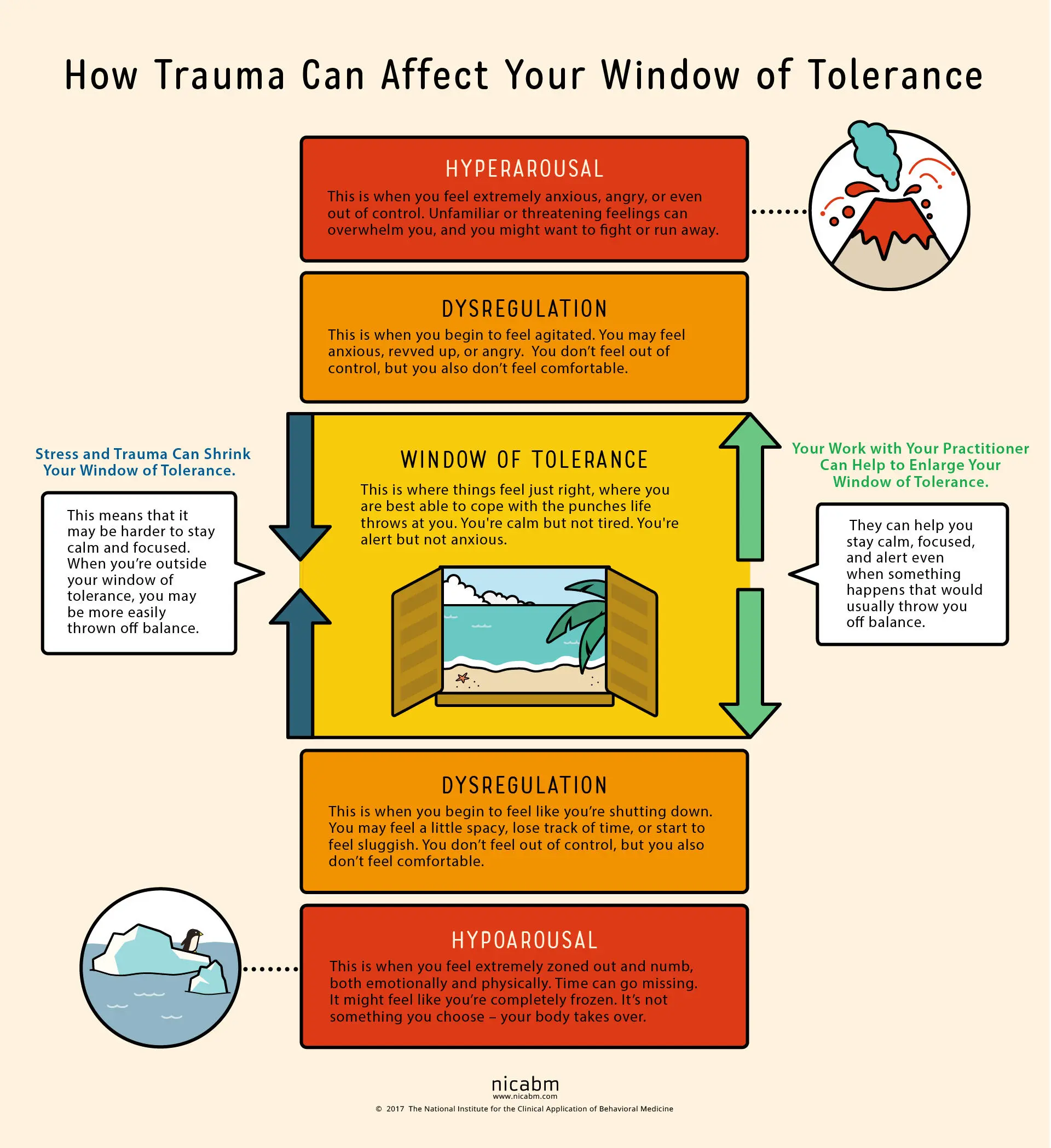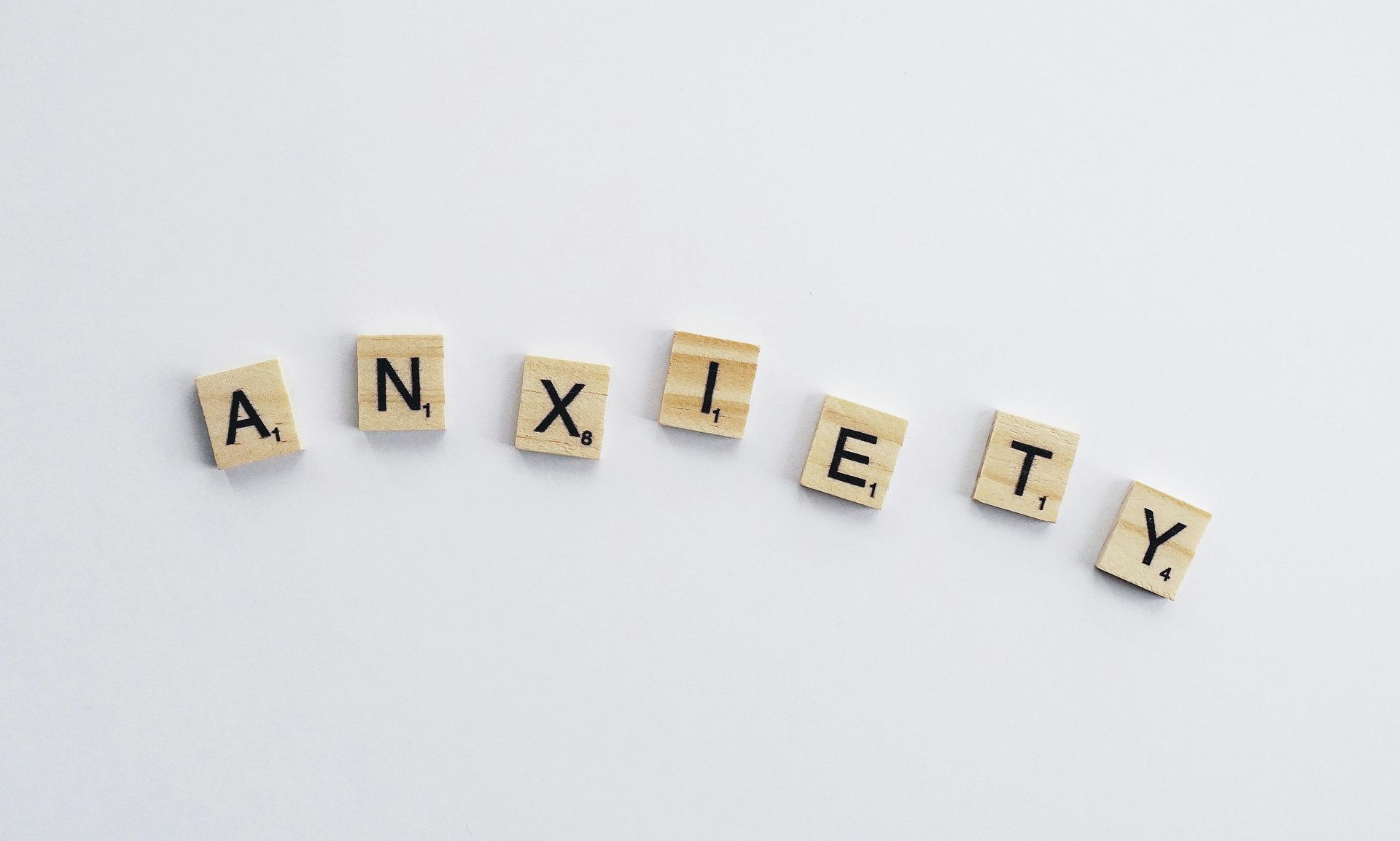The window of tolerance
How knowing your window of tolerance can help you
Being in the window
Imagine yourself walking outside. You notice the fresh snow on the ground, the wind blowing in your hair. Maybe you feel a little cold while enjoying the sunshine. You feel pleasure in walking outside, a sense of well-being that shows, perhaps as a light tingle in your jaw, a feeling of expansion in your chest, a small smile on your face.
You are in your window of tolerance: a space of well-being and connection. A space where you can communicate with other, you notice things about yourself, you can think, feel, connect.
Even if things feel imperfect, even if your life is not going exactly how you wants it to go, you feel good.
And then….
And then something happens. It could be that you slip on ice and fall in the mud, ruining your outfit for the day, bruising you, making you late for your next appointment.
The activating event can last a second, or a few hours, weeks, or even months for some people. You could lose your job, suffer a loss or a breakup, survive a traumatic event, or going through on-going trauma.
You are feeling more and more activated. The more the disruptions happen, the more upset you become. Perhaps you feel angry, impatient, anxious, maybe you feel some physical pain, or numbness. When you feel more and more of the activation, your window of tolerance shrinks.
There is a point in which you leave your window of tolerance and feel the emotions overwhelming you. You enter a space of dysregulation. It is difficult to think and feel at the same time: you think less and feel more.
What does that mean?
It means that even when small inconveniences happen, some that “normally” would not bother you, you find yourself angry, disconnected, numb…. in a way that is disproportionate to the event. It could also mean that you don’t know why you feel angry, disconnected, or numb. When your window of tolerance is narrow, you could feel that way every day, not knowing why.
The size changes
The size of your window can shrink or expand, depending on you circumstances and coping mechanisms. The window shrinks with trauma, repeated triggers, repeated stress, a loss of control etc.
The size of your window can expand when you find connection with other, find meaning in your life, develop coping mechanisms that work for you, work with your therapist, experience joy.
What to do to expand your window of tolerance, step by step
1. Notice/ map what your activating events are, and what happens in your body/mind when you feel activated. You can do that by keeping a journal, send texts to yourself, or just do a quick check in throughout the day by asking the following questions:
“What is going on around me?”
“What do I currently feel?”
“Are the events and my emotions connected? How?”
“What is happening in my body?”
“What’s my story around it?”
2. Scale your level of activation and corresponding event (if you can): 1 for low activation, 10 for fight/flight/freeze. The number is different for each of us and for each event!
3. Start listing what helps you feel good: reading, music, dancing, talking to friends.
Start listing what distraction can temporarily alleviate your pain: social media. Drinking, smoking
Start listing what can increase your dysregulation (arguing, people pleasing)
4. Talk to your therapist about strategies in increasing regulating behaviors, decreasing dysregulating behaviors, and processing the stories you create around the events.
When you understand what creates activation, how those activations show up and what you can co do decrease them, you will start increasing your window of tolerance.
The content of this blog is based on my personal and clinical experience. It is not a diagnostic tool. If you suspect you might have ADHD, please seek assessment by a qualified professional. For more information about who i am, check out the
about me page. For more info about what I do, check out the
services page. And contact me
here










